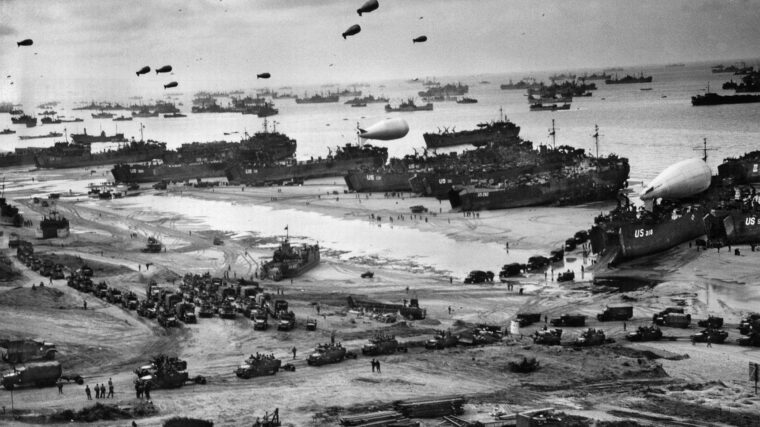
Seaplane Striking Force
By William H. LangenbergThe first few years after World War II were challenging ones for the U.S. Navy. Massive demobilization of personnel and rapid scrapping or retirement of ships created internal disruptions. Read more

The first few years after World War II were challenging ones for the U.S. Navy. Massive demobilization of personnel and rapid scrapping or retirement of ships created internal disruptions. Read more

Unlike many of the paratroopers in the U.S. 82nd Airborne Division, 1st Lieutenant John J. Dolan knew exactly where he was when he landed on June 6, 1944. Read more

The crew of the HMS Alexandria waited anxiously for battle in the minutes before 7:00 am on July 11, 1882. Read more

In 1941-1942, British journalist Alistair Cooke traveled through the United States. In his description of his trip, American Home Front 1941-1942, he reported stopping for breakfast at a restaurant in West Virginia where, “the sugar was rationed at breakfast, and there was a note on the menu requesting that … in the interests of ‘national defense,’ keep to one cup of coffee.” Read more

It is said that hard times create strong men. The first and second centuries bc were certainly a hard time for the diverse peoples of the ancient Near East. Read more

Army commanders understand that the key to dealing with an enemy breakthrough is to slow the enemy’s advance and prevent the breach from widening—that is, “holding the shoulders.” Read more

Marshal Auguste Marmont watched intently as the left wing of his French army maneuvered against the Anglo-Portuguese army during the Battle of Salamanca at mid-afternoon on July 22, 1812. Read more

In the predawn hours of June 6, 1944, the largest armada ever sent into war assaulted the coast of France at Normandy. Read more

In the first week of October 844, Emir Abd ar-Rahman II of Cordoba learned disturbing news: Vikings had captured Seville. Read more

Colonel Ed Raff kept glancing at his wristwatch while trying to control the growing sense of dread inside him. Read more

By Robert L. Durham
Prince Rupert eyed the Parliamentarian position atop the low ridge south of the village of Newbury on the morning of September 20, 1643, with deep concern. Read more

Even now, six decades after the end of World War II, the words “potato masher” just as easily conjure images of the legendary German hand grenade as they do kitchen utensils. Read more

Sergeant Larry Kirby will always remember the fighting on the morning of March 12, 1945, as his unit, Easy Company, 9th Marines, 3rd Marine Division, attempted to move against Hill 362C under the cover of darkness in northeastern Iwo Jima. Read more

Thick black smoke rose skyward from burning villages on the southern frontier of the Hungarian Kingdom in the spring of 1395. Read more

In the late afternoon of September 1, 1939, the 18th Uhlan Regiment of the Pomorska Cavalry Brigade was holding its position along Poland’s heavily forested northwest frontier when orders arrived to attack the flank of the advancing German 20th Motorized Infantry Division. Read more

In the early afternoon of December 5, 1757, the men of Prussia’s 26th Infantry Regiment were drawn up in assault formation just south of the Silesian village of Leuthen. Read more

An estimated 1.2 million people were employed by the German ground-based air-defense system by the end of the war in Europe. Read more

One of the most enduring images of the Middle Ages is the tournament, with its knights in shining armor, heraldic devices on shields, fair damsels watching from the stands, and brightly colored banners flying in the breeze. Read more

By Mason B. Webb
After the debacle at Pearl Harbor on December 7, 1941, the United States realized that it had its hands full. Read more

Colonel Axel Gyllenkrok had had a lot on his mind in recent weeks. It was the autumn of 1708, and as the Swedish Army’s general quartermaster he was not only responsible for supplying its needs on campaign, but he also functioned as an operational manager. Read more